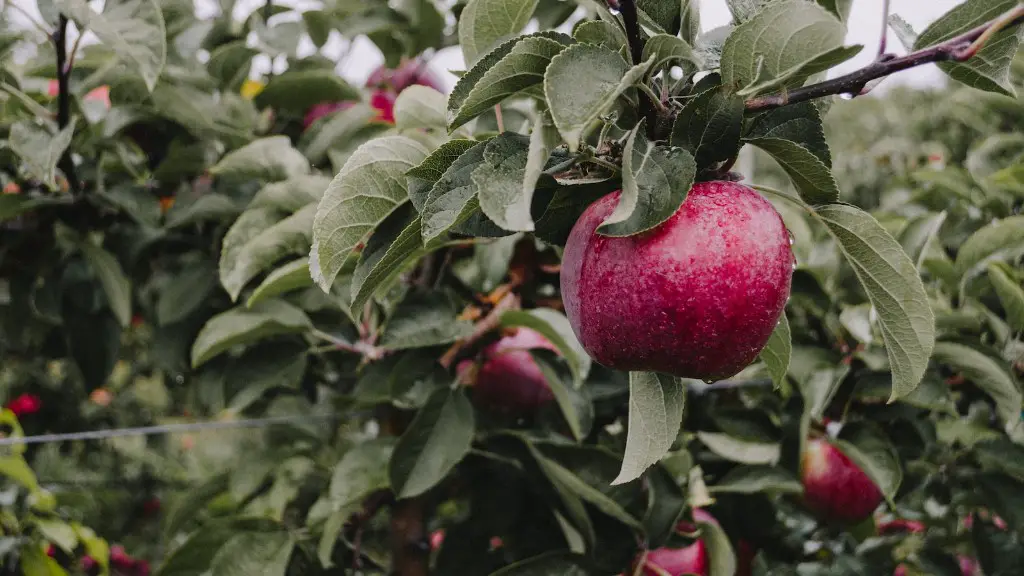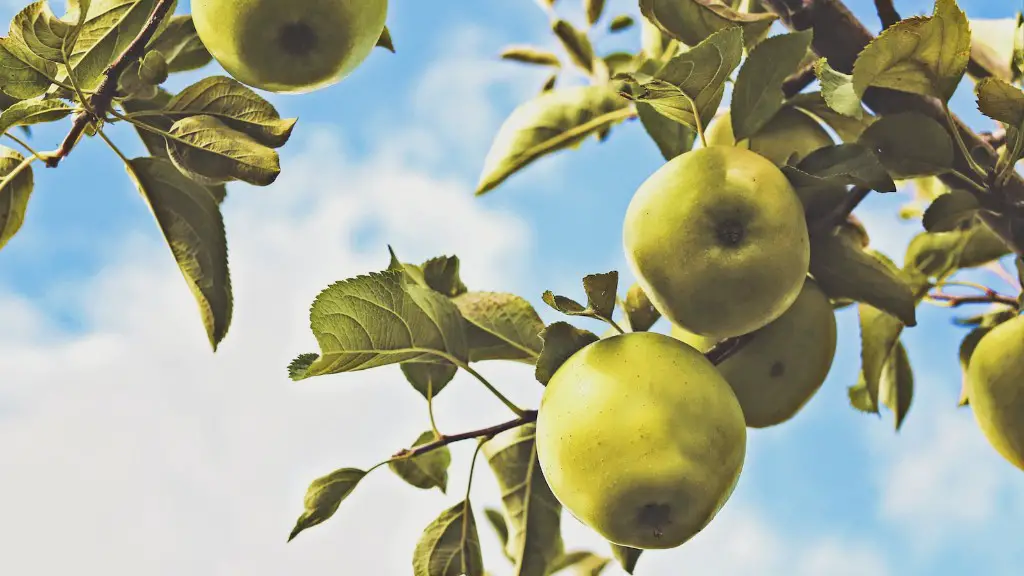The question of whether an apple tree should be pruned annually is a valid one, and one which merits some consideration. Pruning enables the apple tree to grow and produce fruit more efficiently and healthily, and is thus a sensible practice which yields positive outcomes. Additionally, pruning helps weeds, insects, and diseases to be removed in a more effective manner, leaving the tree completely healthy. With these advantages in mind, it’s certainly worth an apple grower giving proper thought to the question of whether they should prune their apple tree annually.
One factor which can help to decide whether or not an apple tree should be pruned annually is its age. If the tree is young and still in the early stages of growth, it’s recommended to prune it every year. Pruning helps the young tree to grow in a well-shaped and healthy manner, and yields the greatest fruit bearing results. On the other hand, if the tree is older and well established, pruning annually is likely not necessary, instead pruning every two years should be sufficient.
Another key factor is the region in which the tree is grown – different climates may demand different pruning techniques and frequencies. For example, in more humid climates, regular pruning of an apple tree is necessary in order to continue producing an abundance of quality results. This is due to the amount of vegetative growth caused by the humidity which needs to be controlled. In contrast, apple trees grown in arid regions may not need to be pruned as often as those in damp climates.
At the end of the day, the decision of whether or not to prune an apple tree annually is a personal one and must weigh the local factors, such as climate and age of the tree, against the potential yield of the tree in the current year. Pruning should be done regularly to keep the tree healthy and to help it reach its full potential. Therefore, for most apple trees, pruning every year is likely to be beneficial, and should certainly be given consideration and thought.
Advantages of Pruning Apple Trees Annually
Pruning an apple tree annually presents many advantages to the tree and its fruit production. Primarily, it helps to keep the tree healthy and suited for fruit production. Pruning allows for a more compact canopy and more light and air to reach the inner parts of the tree – this, in turn, encourages greater fruit bud formation, a more open and balanced canopy, and increased light penetration, resulting in higher yields of fruit. Additionally, pruning helps to maintain a strong branch structure, as well as release some of the burden caused by heavy or weak fruit bearing branches.
Nonetheless, pruning isn’t just beneficial for the tree’s structure and health, it also helps to remove any dead and diseased branches, as well as any pests and insects which may be present within it. This means that the tree can remain protected from possible infection and damage, as well as ensuring that its fruits remain safe, healthy, and free from any kind of harm. Furthermore, regular pruning also helps to stimulate new growth, aiding in creating a larger canopy with a more even shape.
Overall, the advantages of pruning an apple tree annually are clear. Pruning helps to keep the tree healthy, promote strong and even growth, and safeguard the tree from disease and pests – all of this helping to ensure that the tree reaches its full potential in terms of production and quality.
Pruning Timelines
Knowing when to prune an apple tree is just as important as knowing why to prune it in the first place. Generally speaking, the ideal time for pruning a young, growing tree is winter, when it is dormant. This is because, during winter, the growth slows down and the tree can resist pruning more easily. On the other hand, for well-established trees, pruning is best carried out during late summer, as this stimulates new spring growth and helps emphasize the summer flowering of the next season.
However, another crucial factor to consider when deciding when to prune is the weather – if the winter is particularly cold, pruning should be delayed until the winter’s end in order to minimize the potential damage the cold may cause to the tree. It’s also important to consider the age of the tree – newly planted apples should be pruned lightly, and an increase in the severity of the pruning is recommended as the tree grows.
In summary, it’s important to consider the weather and the age of the tree when deciding when to prune. In general, winter is the favoured time for pruning, though a drastic drop in temperature may prompt a delay in the pruning process. Additionally, newly planted trees should be pruned lightly, with the severity of the pruning increasing as the tree matures.
Pruning Tools
When it comes to pruning an apple tree, there is an array of tools available which can help the process along. A typical pruning set contains three items: loppers, a pruning saw, and pruning shears. Loppers are best used for larger branches and are particularly effective when attempting to reach higher up in the tree. Pruning shears, meanwhile, are suited for smaller branches and crown shaping – their versatility makes them an obvious choice for most pruning tasks. Lastly, pruning saws are used for cutting through thicker branches and for creating cleaner cuts on the trunk.
In addition to these tools, there are some other pieces of equipment which may be useful, such as ladders, telescopic tree pruning saws, and easy-to-grip pruning shears. All of these help to make the pruning process easier, quicker, and safer. It’s essential to always choose the right tool for the job at hand, as using the wrong tool can not only damage the tree, but also harm the pruner.
In conclusion, it’s important to choose the right tool for the pruning job. A typical pruning set includes loppers, shears, and a saw, though ladders and telescopic saws are also handy. With the right set of tools, the pruning process becomes much easier and more effective.
Aftercare of Pruning
Once the pruning is completed, it’s important to ensure that the tree receives the right aftercare to ensure the pruning process was a success. Firstly, it’s important to check the cuts which were made, as jagged edges and frayed edges should be removed and smoothed out accordingly. This helps to keep pests and diseases away and to create a better level of protection for the tree. Additionally, it’s beneficial to apply a wound sealer to the cuts, particularly if the pruning was more significant in order to prevent any moisture from entering the tree.
Whilst applying a wound sealer is a good idea, what’s even better is to use the unused buds from pruning the tree in order to help further protect it. Unused buds need to be grafted onto another apple tree, either a seedling or an existing tree. This helps to encourage new growth and to protect the existing tree from infection and diseases. By grafting onto a new tree, the existing one receives an extra layer of protection as, should it become infested, the entire load of harvest won’t be subjected to the same fate.
Furthermore, after the pruning is complete, it’s important to check the surrounding area for any pests and to remove them from the vicinity. This helps to keep the pruned apple tree free from pests and free from any potential damage they may cause. Additionally, checking all the nearby trees is highly recommended – by inspecting them, it’s possible to catch a potential pest or disease problem early on, and to take steps to prevent it from spreading.
In summary, aftercare is an essential part of the pruning process. The cuts should be checked and smooth out, a wound sealer be applied, and unused buds should be grafted onto a new tree. Furthermore, the surrounding trees should also be checked for potential pests, and any that are spotted should be removed. By following these steps, the apple tree pruned can be assured of a successful future of healthy growth and excellent fruit production.


